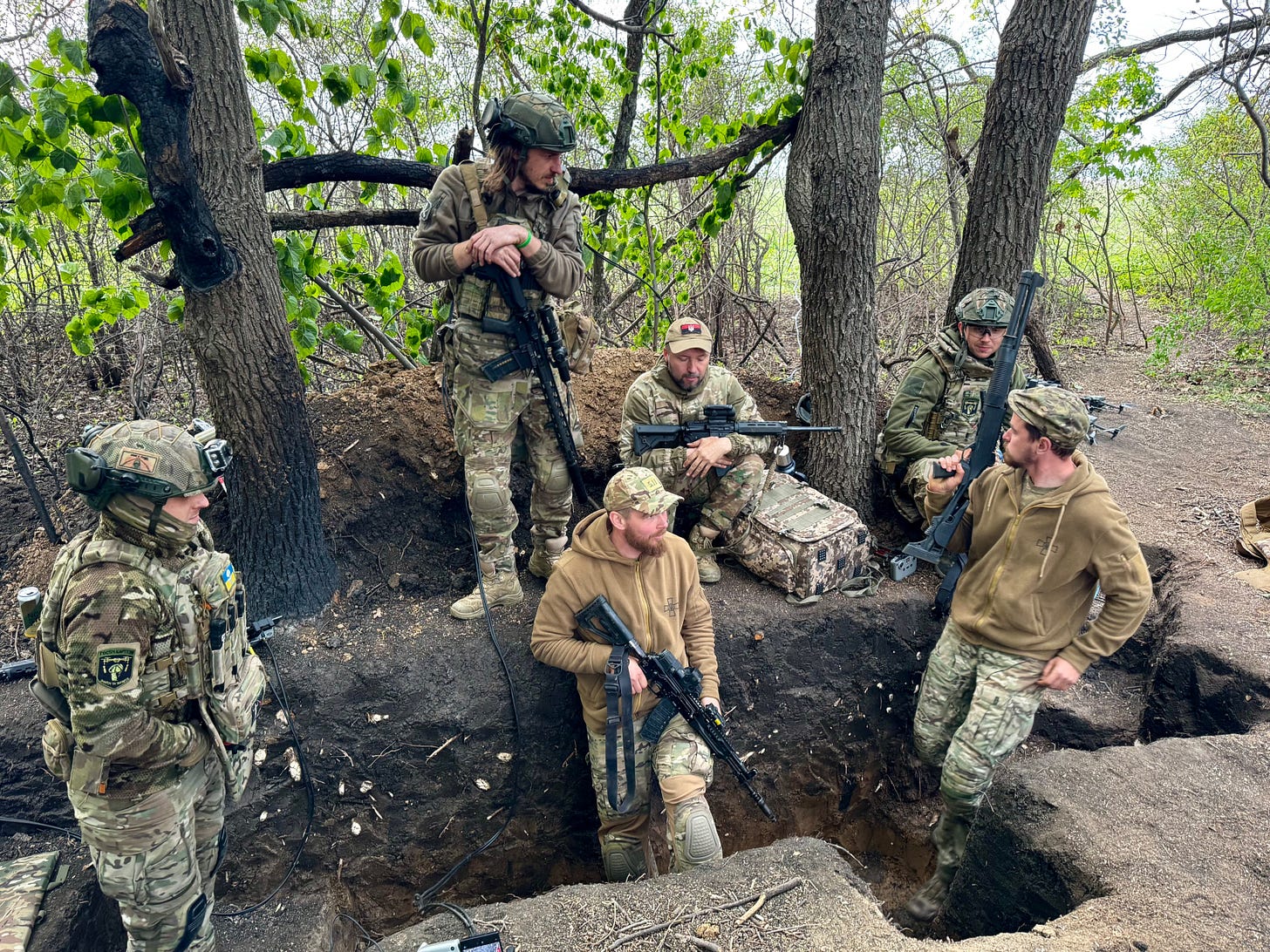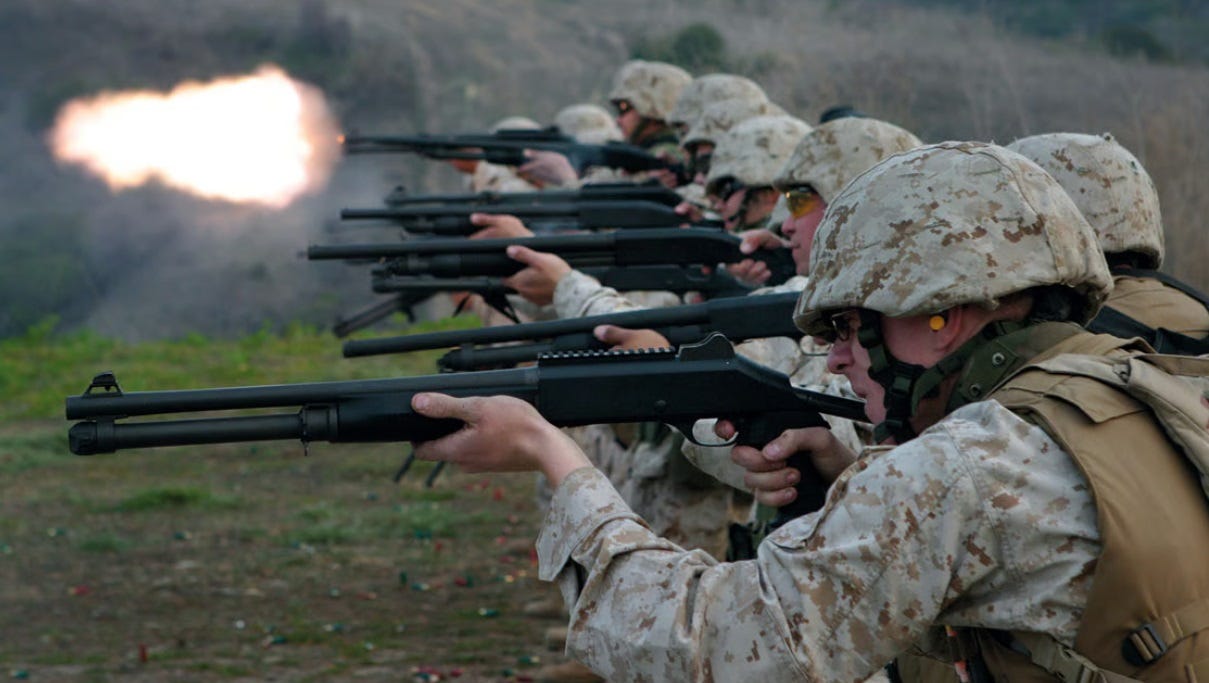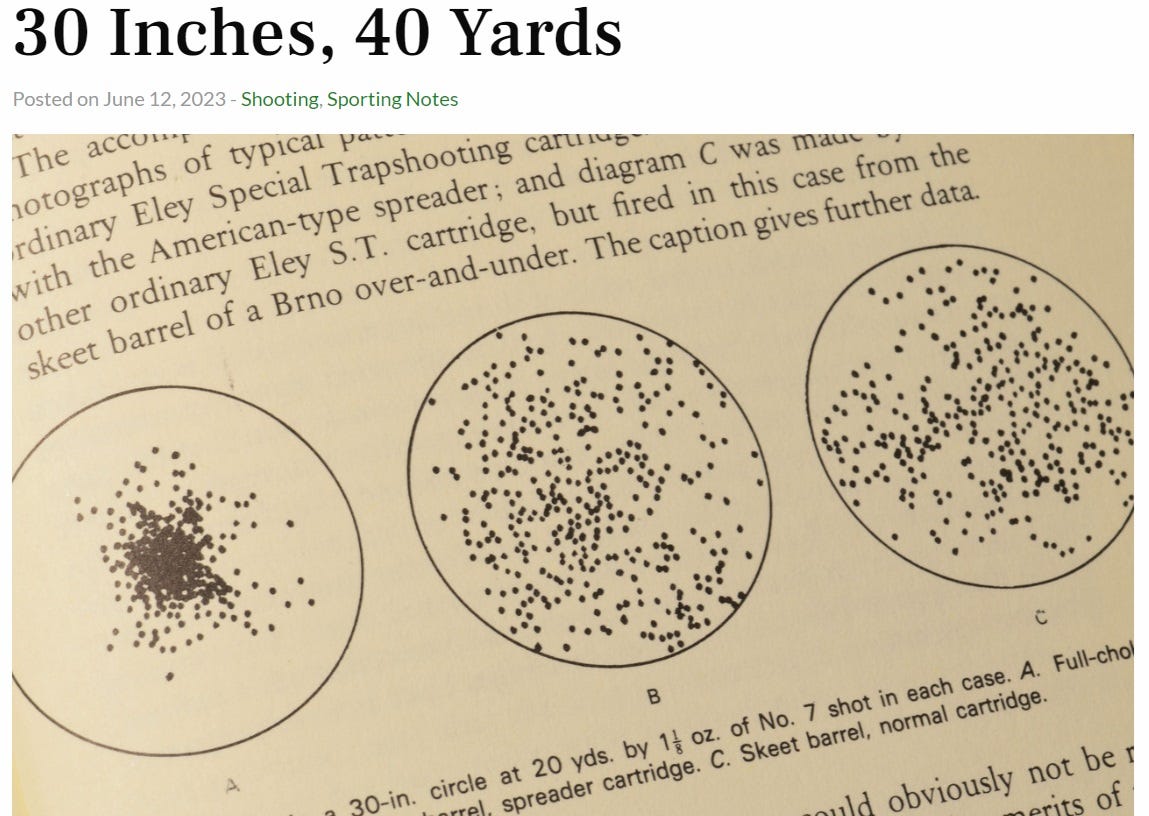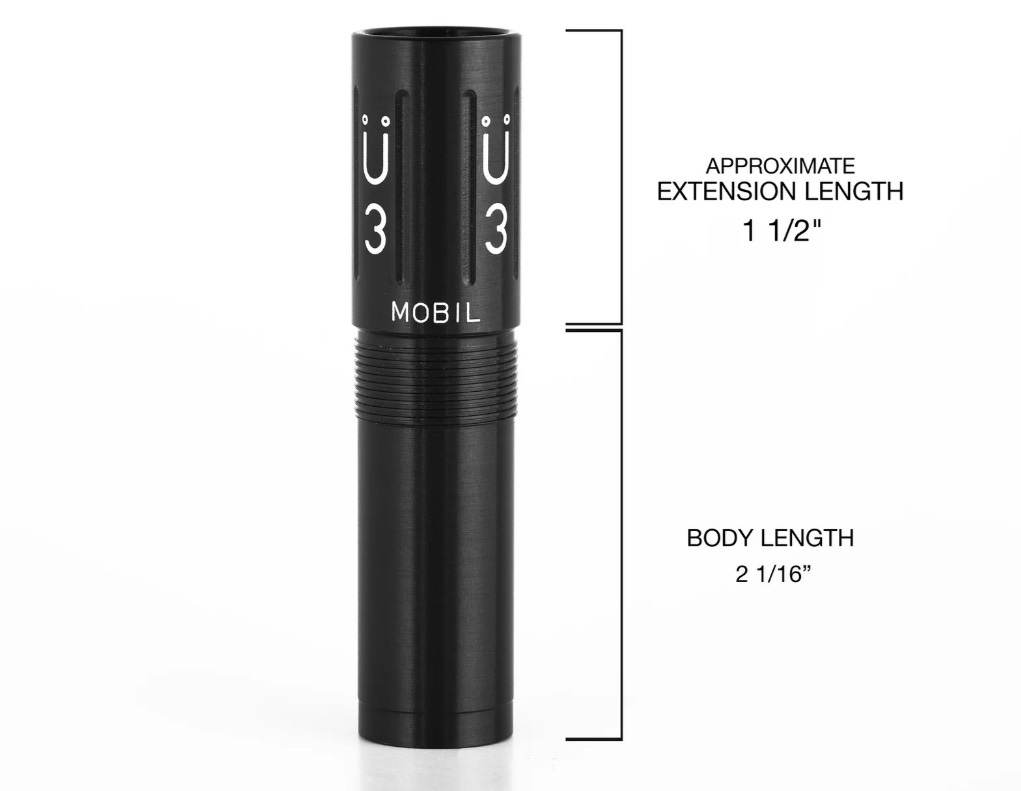I’ve seen some war commentators say that they have seen more than a 1000 hours of war footage. I’ve seen some say that they have viewed more than a 1000 Russian’s die. I’m sure I am well over those unfortunate milestones after 900 days of war. The research I do has me spending hours each day trying to understand the conflict, one thing is clear. The 12 gauge shotgun isn’t as prevalent on the battlefield as it could be.
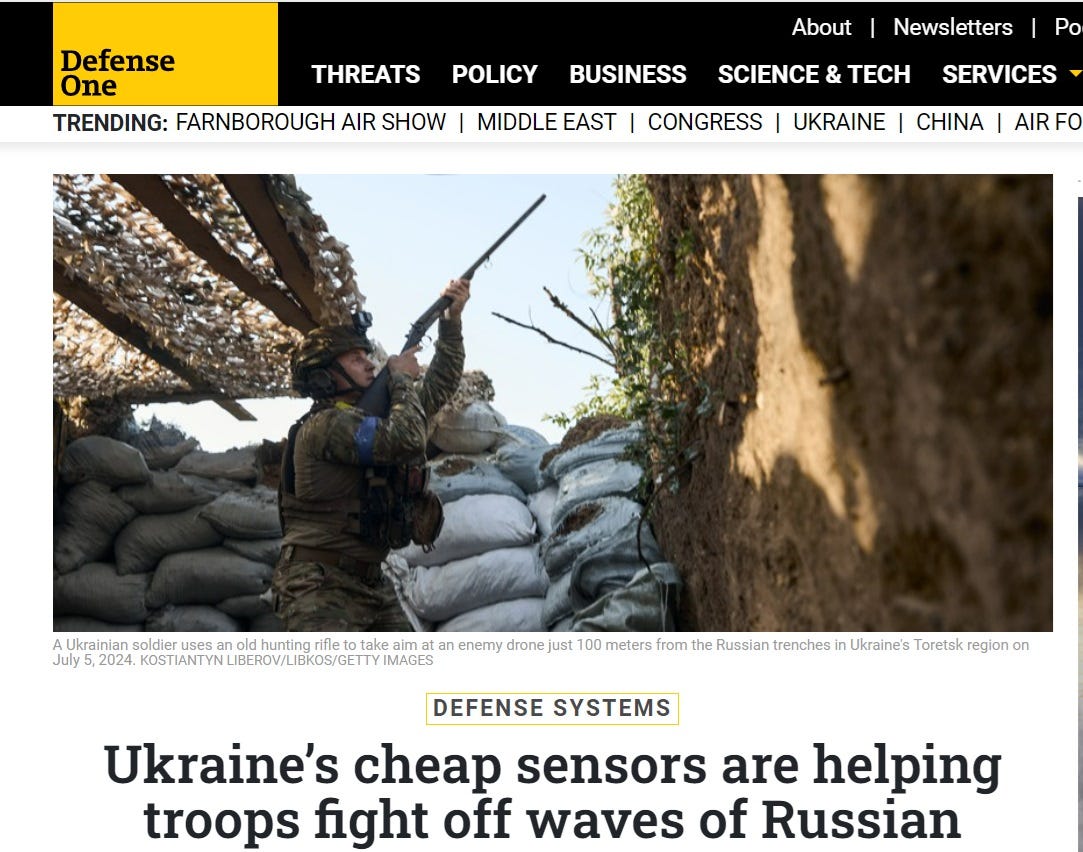
In the past year I have seen several people mention and then dismiss the idea of using shotguns to defend against small UAVs (sUAVs). The dismissal usually goes along the lines of:
The gun is too heavy
The gun is ineffective
The gun would replace a more important weapon, the rifle.
The gun is obsolete on the battlefield
The gun can’t handle war conditions
None of this is true. The following will show how a Benelli M4 or M4 clone could provide to Ukraine a useful means of defending individuals, squads, and even up to platoon sized groups of soldiers in the open battlefield or trench.
If you follow the Russian invasion of Ukraine you know that UAVs are ubiquitous on the battlefield. Every move on or near the front is known by both sides. UAVs don’t just gather intelligence and reconnaissance, but also deliver munitions. Both anti-personal and anti-materiel.
Occasionally I will come across a photo or video that shows a Ukrainian or Russian soldier holding a shotgun. But it has not been made the norm. I did however come across a piece about Ukraine purchasing a large number of shotguns from Turkey. What will or has come of this, I don’t know
.The Benelli M4 shotgun was adopted by the US Marine Corp around 1999. It is used by militaries and law enforcement around the world. It is a reliable gas operated semi automatic design. It will cycle/fire rounds as fast as you can pull the trigger. It can be configured with up to 9 rounds of 2.75 inch ammo in a tube magazine and 1 round loaded into the chamber. Though in my suggested configuration this will be a little less.
The firearm can use both 2.75 inch (70mm) and 3 inch (73mm) shells/ammunition. It can be configured in many ways, including a skeletonized version that cuts down on weight. Though I contend this will increase felt recoil and make follow up shots less accurate.
This firearm is battle tested and highly regarded. And what’s more, the patent has run out. Clones of the M4 are available from Turkish gun makers and all Benelli parts and accessories will fit these clones. Clones that cost a fraction of the near $2000 a shotgun for an original M4.
Finally, this gun is already in Ukraine. It is already on the front lines. But how often it is used and to what effect, I don’t know.
Why a shotgun?
A shot-gun shoots ammunition that holds pellets of metal. What kind of metal and how many depend on what a person is “hunting”. If you are hunting deer or a deer sized enemy then a pellet that is about 7.62mm is often used (30 caliber/ 00 aka double aught buckshot) . If you are hunting waterfowl or turkeys you might use 3-6 mm sized pellets (B, BB, BBB, T, FF, #4 buckshot). These pellets can be made of soft lead (traditional) or harder metals such as bismuth and tungsten. Typically the harder the metal, the better the penetration of skin, fur, and feathers. These pellets spread out into a shot pattern. Anything inside this pattern should be hit by at least one pellet. But the further a target is from the shooter, the less likely it is to score a hit.
Here is as good a place as any to stop and point out that shotgun and shotgun ammo naming is based on old English. For instance, the “gunpowder” that is used in a shotgun is measured in drams or grains. You’ve already seen the zero in “00” referred to as double AUGHT. Similar to naught. It’s confusing. Also, the length measurements are imperial not metric. Based on inches.
Here is also a good place to point out that I am a lifelong hunter. I am personally familiar with everything I am referencing here. Beyond that I was part owner and chief gunsmith of a gun store in the USA.
Continuing, if your prey is a sUAV I think the closest analog is obviously flying waterfowl. The speed, size, and maneuverability of these birds make them the best stand in. For instance, the red breasted Merganser duck is the fastest waterfowl in the world. Flying straight it was once clocked at 100 mph. But, more on speed later.
To hunt a UAV I would suggest the Benelli M4 with a magazine extension. A modified choke tube that adds almost 2 inches to the barrel length. This will limit the spread of the shot pattern. A three inch shotgun shell is necessary and either #4 buckshot or between T and FF sized shot. The shot should be made of steel, bismuth or tungsten for maximum penetration.
In terms of muzzle energy, I would suggest a powder charge that gives you at least 1300 feet per second of muzzle energy. This is super sonic and will penetrate any of the plastic parts of a drone at up to 30 yards/27 meters, and most plastic pieces at 45 yards.
Training
Sporting clays whether Trap Shooting or Skeet Shooting would be a great training platform. Skeet clays can travel up to 55 mph or 88.5 kph. Faster than a maneuvering FPV drone. Almost as fast as a FPV drone moving in a straight line. Remember FPV sporting drones don’t carry extra large batteries and explosives. Military FPV drones can’t fly nearly as fast as their sporting counterparts when loaded.
The idea that you must lead a flying target isn’t natural. A shooter trying to hit a moving target must anticipate or “lead” the target. Shooting where the target will be, not where it is. This is why just handing out shotguns to untrained personnel is a recipe for failure.
Gear
I suggest that two people per squad carry a shotgun and that everyone be trained on it. Unloaded, the shotgun weighs about 9 pounds. This is before adding anything else to it. 1-2 pounds heavier than an AK-74. Much lighter than a large caliber machine gun or a 50 pound Javelin missile system. Both soldiers should have about 20 rounds on their person. And deploy forward with no less than the ability to carry 100 rounds each. And yes, these soldiers should also carry their AK-74 or other issued rifle.
The Shotgun as an Offensive Weapon
The M4 is an awesome offensive weapon. Even against enemies at close range with body armor. At close range, the M4 can be loaded with buckshot and can deliver quite an impact. Yes, it would take several well placed shots to kill your enemy quickly. But assuming you only had the shotgun available, you could take an offensive position. For an enemy without body armor, it’s totally devastating. I would prefer this weapon in a trench or clearing a house vs a rifle if the enemy did not have good body armor. I would be very confident with a Benelli M4 and 00 buckshot. Still, not knowing this for sure means I would always opt for the rifle against an enemy likely to have armor.
Maintenance
Ukrainians are already trained on how to maintain gas operated weapons. Once trained on how to clean an M4, there isn’t anything special to keeping it operational in combat conditions. In most cases the Benelli M4 would probably prove more reliable than a standard issue AK-74. Certainly anything issued early on in the war.
Operation
The M4 with a choke tube extension should be able to consistently hit targets at 30 yards. To “kill” the target the shot placement would need to cause any one or all of the following.
Electrical/battery failure
Optical/communications failure
Flight failure, loss of momentum or altitude
Premature destination of ordinance
This means there are several ways to overcome an enemy UAV. You are not just hoping for a perfect placement of a single projectile.
The squad designated shotgunner would work in tandem with another squad member as a spotter to increase the likelihood of spotting an enemy UAV in time to destroy it before it is too close. Too close depends on the UAV. If it is carrying a munition like a grenade that means too close is 15 yards. If it’s carrying something like a Claymore mine, 50 yards is too close. But, at 50 yards the “shot pattern” only gives a Claymore a 30% chance of hitting its target. All this to say, the sooner you see the target the better.
A well trained shooter with a few engagements under their belt could probably consistently hit fast moving targets up to 40+ yards (37 meters). And the videos where we see a drone chasing someone around and around, this would be a fail for the drone operator now. This is the perfect situation for a good squad shotgunner. Another perfect situation is the approach of the UAV. A lateral shot is difficult. The head on approach shot it the easiest. And most dangerous.
Caveats**
As previously said, just handing out a shotgun to a squad on the front isn’t a good plan. Training is necessary. On the job training may be necessary but it’s less than ideal. This is not a perfect solution for all situations. Stationing a person on the back of a vehicle might give you a better than zero chance of defending from a UAV, but attack angle and speed might be so much to the drone’s advantage that nothing can be done. This is a small unit solution meant to counter known sUAVs. This doesn’t do anything to help with detection.
Conclusion
I am supremely satisfied that a quality shotgun (M4), a well trained shooter, and the proper ammunition would be very effective against known small UAVs. This could significantly increase survivability and force the enemy to change tactics.
Also published here:






